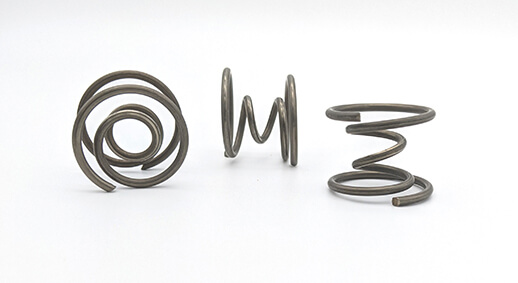Get unique, complex parts easily. No matter your requirements, Chaoyi Spring creates hard-to-produce coil springs and wire forms.
Let us help you create the custom wire form you need, from S-hooks and J-hooks to utility hooks and more.
We work closely with customers across a wide range of industries, helping them design and manufacture made-to-order parts.
Why choose Chaoyi Spring? We prioritize customer-focused collaboration, modern equipment and the latest technology to make your parts per print.
Find the information and guidance you need, from measuring a spring to learning about materials, placing an order and much more.
Conical compression springs, characterized by their tapered design, offer a unique blend of functionality and efficiency in various mechanical applications. Unlike their cylindrical counterparts, conical springs exhibit a progressive spring


Conical compression springs, characterized by their tapered design, offer a unique blend of functionality and efficiency in various mechanical applications. Unlike their cylindrical counterparts, conical springs exhibit a progressive spring rate, meaning their resistance to compression increases as the spring is compressed. This property, coupled with their compact size and high load-carrying capacity, makes them a compelling choice for a wide array of engineering challenges. This article delves into the intricate world of conical compression springs, exploring their design principles, diverse applications, and the advantages they bring to the table.

Conical compression springs, as the name suggests, are helical springs with a tapered design. They differ from cylindrical springs in that their wire diameter and coil diameter gradually decrease from one end to the other, creating a conical shape. This subtle design nuance results in a distinct advantage – a progressive spring rate. In simpler terms, the force required to compress a conical spring increases non-linearly as the spring is compressed. This progressive rate is a direct consequence of the decreasing coil diameter, which translates to a higher spring stiffness at greater compression levels.
The progressive spring rate inherent in conical compression springs unlocks a host of advantages that make them attractive for a wide range of engineering applications:
The unique characteristics of conical compression springs make them versatile components employed in a diverse range of applications, including:
While conical compression springs offer numerous advantages, designing them effectively requires careful consideration of several factors:
Conical compression springs, with their unique progressive spring rate and compact design, have established themselves as an essential component in a wide array of mechanical applications. From automotive and aerospace to industrial machinery and consumer products, these springs offer a blend of performance, efficiency, and reliability that makes them a valuable asset in engineering design. By understanding the advantages, applications, and design considerations of conical compression springs, engineers can effectively leverage their unique capabilities to achieve optimal results in their projects.
In conclusion, conical compression springs stand as a testament to the ingenuity of mechanical design, offering a compelling solution to engineering challenges where high load capacity, compact size, and controlled motion are paramount. Their progressive spring rate, diverse applications, and inherent design advantages make them a valuable component in a wide range of industries. As we continue to push the boundaries of engineering innovation, conical compression springs will undoubtedly remain an integral part of our technological landscape, contributing to advancements in various fields.
Browse some of the custom wire forms and springs that we manufacture. Don’t see what you need? We specialize in made-to-order products that meet your application requirements.
Visit Our GalleryNeed a custom wire form or coil spring? We make it work. Fill out the contact form and a representative will respond within 1 business day. If you have a PDF or CAD file, you can submit to request a quote.